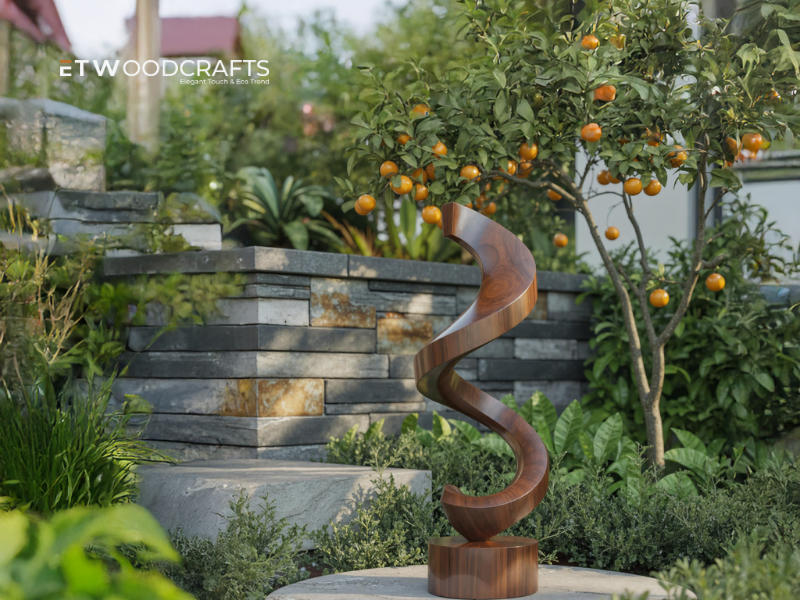When people ask, What are the different types of sculpture?, they are usually curious about the many forms, techniques, and creative expressions that artists have used throughout history. Sculpture is one of the oldest art forms in the world, and it has evolved dramatically, from ancient stone carvings to sleek and conceptual modern pieces. Today, sculptures exist not just as historical monuments, but also as contemporary design pieces that enrich homes, gardens, and public spaces. To fully appreciate this art, it’s important to explore the major categories of sculpture and understand how they differ from one another.
1. Traditional Sculpture Styles
Carved Stone and Marble Sculpture
For centuries, stone and marble were the most celebrated materials in the sculptor’s toolkit. Michelangelo’s “David” and countless Greek statues remain iconic examples of carved masterpieces. These works involve carefully chiseling a block of stone until the form reveals itself. The durability of stone makes it ideal for timeless monuments, and the beauty of marble provides both strength and elegance.

Bronze and Metal Casting
Bronze casting became a breakthrough in sculpture because it allowed for more intricate designs and dynamic poses. Unlike stone carving, metal casting enables replication and greater flexibility in form. From small figurines to massive equestrian statues, bronze remains one of the most enduring mediums. Its reflective qualities also make it highly prized for both classical and modern interpretations.
Wood Carving and Organic Forms
Wood has been used in sculpture since prehistoric times, and it remains a vital medium due to its warmth and versatility. Traditional wood carvings often depict religious figures or cultural motifs, while contemporary wooden sculptures can range from abstract minimalist forms to complex, life-sized creations. The natural grain of wood adds a living texture that other mediums cannot replicate.
2. The Types of Modern Sculpture
Abstract and Conceptual Works
In discussing the types of modern sculpture, abstract art stands out as one of the most influential. Abstract sculpture does not try to imitate reality directly. Instead, it focuses on form, movement, and symbolism. These works encourage viewers to interpret meaning personally, making them deeply engaging and versatile in contemporary spaces.

Kinetic and Interactive Sculpture
Modern sculptors have experimented with motion, light, and technology to create kinetic sculptures. These works may move with the wind, use mechanical systems, or incorporate light displays. Interactive sculptures invite the audience to engage directly, transforming art into an immersive experience. Such works reflect innovation and the human desire to merge art with technology.
Installation and Environmental Sculpture
Installation sculpture transforms entire spaces rather than existing as a single object. Artists design immersive environments that often challenge perceptions of scale and space. Similarly, environmental sculptures integrate with nature, using landscapes, gardens, or public parks as their canvas. These creations often explore themes of sustainability, ecology, and humanity’s relationship with the environment.
3. Exploring Modern Art and Its Influence on Sculpture
Defining Modernism in Sculpture
When asking What are the three types of modern art?, the answers typically point to abstract art, expressionism, and surrealism. Each of these movements has influenced sculpture in profound ways. Sculptors embraced abstraction to focus on form, expressionism to convey intense emotions, and surrealism to challenge reality with dream-like imagery. These movements shaped the foundation of today’s sculptural practices.

Characteristics of Modern Sculpture
What makes a sculpture modern? It is often defined by its departure from classical representation. Modern sculptures embrace innovation, experiment with unconventional materials, and push beyond traditional boundaries. Whether through geometric abstraction, industrial materials, or minimalist approaches, modern sculpture reflects the cultural and technological shifts of the twentieth and twenty-first centuries.
Iconic Figures of Modern Sculpture
Modern masters such as Constantin Brâncuși, Henry Moore, and Barbara Hepworth paved the way for contemporary sculptors. Brâncuși’s streamlined forms redefined abstraction, while Moore and Hepworth’s monumental organic shapes influenced public art worldwide. Their legacy continues to inspire today’s artists, who experiment with digital fabrication, recycled materials, and multimedia integration.
4. Why Choosing ET Woodcrafts is the Best Option
A Blend of Tradition and Innovation
ET Woodcrafts stands at the crossroads of timeless craftsmanship and modern creativity. While many sculptors limit themselves to either classical or contemporary styles, ET Woodcrafts integrates both approaches. Their works highlight the beauty of natural materials like reclaimed wood while embracing abstract and modern design principles. This unique combination ensures that each piece resonates with tradition but feels fresh in a modern space.

Custom Sculptural Design for Every Space
Unlike mass-produced decorative items, sculptures from ET Woodcrafts are carefully crafted to suit individual tastes and environments. Whether a client desires a centerpiece for a living room, an artistic accent for a garden, or a large installation for a commercial space, the team tailors each piece to enhance its surroundings. This customization ensures that no two works are identical, making every sculpture a true original.
Commitment to Quality and Sustainability
Sustainability is at the heart of ET Woodcrafts’ philosophy. By sourcing eco-friendly materials and employing sustainable practices, the brand ensures its creations are not only beautiful but also environmentally responsible. This commitment adds value to each sculpture, aligning with modern values of conscious living and ethical consumption.
5. Conclusion
Sculpture is an art form that spans centuries, cultures, and philosophies. From stone carvings and bronze figures to the types of modern sculpture that push creative boundaries, it continues to evolve and inspire. When considering What are the different types of sculpture?, it becomes clear that this art is as diverse as human imagination itself. For those who appreciate the fusion of tradition, sustainability, and contemporary design, ET Woodcrafts offers unmatched artistry. Choosing ET Woodcrafts's Abstract Sculpture means embracing both the timeless spirit of sculpture and the innovative vision that defines modern creativity.

